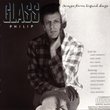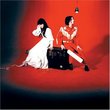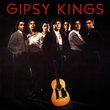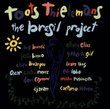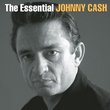| All Artists: Philip Glass, Dennis Russell Davies, Stuttgart Chamber Orchestra Title: Philip Glass: Symphony No.3 Members Wishing: 2 Total Copies: 1 Label: Nonesuch Original Release Date: 1/1/2000 Re-Release Date: 5/30/2000 Genre: Classical Styles: Opera & Classical Vocal, Ballets & Dances, Ballets, Historical Periods, Modern, 20th, & 21st Century, Symphonies Number of Discs: 1 SwapaCD Credits: 1 UPC: 075597958126 |
Search - Philip Glass, Dennis Russell Davies, Stuttgart Chamber Orchestra :: Philip Glass: Symphony No.3
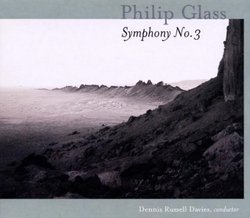 | Philip Glass, Dennis Russell Davies, Stuttgart Chamber Orchestra Philip Glass: Symphony No.3 Genre: Classical
Philip Glass has already written more operas than Wagner and more symphonies than many composers. With his astonishing output and his professed joy in writing, he shows no hesitation as he approaches the supposedly jinxed ... more » ![header=[] body=[This CD is available to be requested as disc only.]](/images/attributes/disc.png?v=a4e11020) ![header=[] body=[This CD is unavailable to be requested with the disc and back insert at this time.]](/images/attributes/greyed_disc_back.png?v=a4e11020) ![header=[] body=[This CD is available to be requested with the disc and front insert.]](/images/attributes/disc_front.png?v=a4e11020) ![header=[] body=[This CD is unavailable to be requested with the disc, front and back inserts at this time.]](/images/attributes/greyed_disc_front_back.png?v=a4e11020) |
Larger Image |
CD DetailsSynopsis
Amazon.com Philip Glass has already written more operas than Wagner and more symphonies than many composers. With his astonishing output and his professed joy in writing, he shows no hesitation as he approaches the supposedly jinxed No. 9 (he has premiered five so far). The Symphony No. 3, for 19 strings, dates from 1995. Longtime champion Dennis Russell Davies and the Stuttgart Chamber Orchestra give a snappy, atmospheric reading of this enigmatic work, whose emotional core is the third movement's ruminative chaconne, flanked by shorter, faster movements that toss off grace notes recalling the gestures of Middle Eastern dancers. Next, two scene-change interludes from the CIVIL warS, omitted from the 1999 recording of Glass and Wilson's aborted Olympics spectacle, surround the "Mechanical Ballet" from the Columbus opera The Voyage. As excerpts, these pieces cannot significantly influence our interpretation of Glass's evolving aesthetic, but they offer revealing snapshots of works that have never been completely represented on disc. The last track, The Light, part of his Portraits of Nature trilogy (along with Itaipu and The Canyon), was booed on its Cleveland premiere. However, there's no good reason for such a response. By his own admission, Glass remains primarily a collaborative composer. It's easy enough to imagine this piece accompanying a retro silent film about Michelson and Morley, the two light-obsessed scientists Glass commemorates. Like The Canyon, this one-movement work demonstrates his good humor, fertile imagination, and skillful orchestration. His critics always claim that he lacks these gifts, that his music is nothing but the same thing over and over again. On the contrary, this marvelous disc shows how Glass's music is never the same thing, over and over again. --Robert Burns Neveldine Similarly Requested CDs
|
CD ReviewsThe Light! Jason Bunch | Indianapolis, IN United States | 03/21/2003 (5 out of 5 stars) "I find it funny that "The Light" was so poorly received. It is the proper climax for this subtle and excellent release. I have been a long time Philip Glass fan and find nearly all of his releases to be unique masterful pieces of work. Those who complain it is all of the same, simply are not listening. Recently I let a friend borrow some of his cds and because I couldn't find one that was totally representative, I sent him home with four. Most artists could suffice with one, but I can't think of a single cd that gives a good overview of the supposedly "all of it is the same" Philip Glass. This release is no exception. Symphony 3 is one of Glass's more subtle works and requires a careful listen. I think it is probably best appreciated by long time fans, who realize the variance and subtlety of the piece. What follows are some excellent pieces by any other standard, but admittedly not total standouts for Glass. Nevertheless any listener will enjoy them fully as they are quite good, just not as good as what is to come, which is "The Light." "The Light" is full-on Glass that starts with whimsy and works its self up into the heights of heaven. An astonishing and inspiring work that stands as one of his best. This cd would be worth getting for this piece alone, luckily it is worth getting for the whole thing." There?s more than just Symphony 3 on this CD Richard Morgan | Columbus, Ohio | 06/29/2000 (5 out of 5 stars) "While many of Philip Glass's other CDs are presented as a single thematic package (even Glassworks has the same feel to much of the music), this release is a compilation of shorter works pressed together on one CD. Symphony Number 3 is heavy on the strings with plenty of sliding and pizzicato; overall, the symphony isn't as dynamic and powerful as his Symphony Number 2. However, the tonal myriad of the various strings is a real treat. While the first and second movements are energetic, the real cornerstone of the symphony is the somber third movement. It is reminiscent of his operatic work as a sequence is repeated throughout the various instruments with various additions and subtractions made as the movement progresses. The short forth movement returns to the energetic feel of the second movement finishing the symphony with a flourish.There are two interludes from the CIVIL warS included. As the name of an interlude would suggest, these pieces are bridge pieces with a softness and subtlety of play. While the CIVIL warS itself can be cacophonous at times, these interludes are calming and quite melodic. Between the two interludes, a piece from The Voyage is included. This short piece uses the full orchestra alternating between dramatic crescendos and softer solos. It definitely has my interest as to what the rest of The Voyage sounds like.The real star of this CD, and my favorite, is The Light. I believe The Light is much like Itaipu in purpose and dimension: dedicated to an achievement of man. Thus, the music is inspiring and dramatic; the use of the brass section of the orchestra is exquisite. The liner notes report that "Mr. Glass depicts the light itself" which I did not hear; it sounds much more "romantic" than just light itself.Philip Glass critics may say the music on this CD is the same recycled themes found in most of his work. To Philip Glass fans, this CD is a definite addition to their library. So if you're just a casual listener to Philip Glass, pass on this one; for the rest of us fanatics, he can't release this music fast enough. While I gave 5 stars (because whatever you say, it's still Philip Glass and worth 5 stars), when compared to his other discs I'd rate it at 4 stars." The picture looks like the music sounds - or vice-versa. Douglas T Martin | Alpharetta, GA USA | 12/04/2000 (4 out of 5 stars) "The 3rd Symphony sounds like the usual Philip Glass orchestral works but has a stronger-than-usual theme. If not for the patented minor arpeggio/major arpeggio see-sawing I might describe the style as "Romantic classicism". Formidable without being angular - I don't know how to describe the CD except to say that the monocromatic photograph of an expansive landscape used for the CD cover illustrates the sound perfectly - broad and wide open. Excellent performances and recording quality througout."
|

 Track Listings (8) - Disc #1
Track Listings (8) - Disc #1

